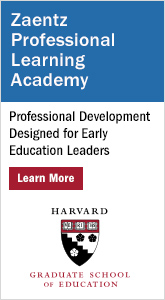ExchangeEveryDay Past Issues
 << Previous Issue
| View Past Issues | | Next Issue >>
<< Previous Issue
| View Past Issues | | Next Issue >> -Steve Burnett
Ann Hodgman, writing in Smithsonian Magazine, explains that in 1968, immediately following the assassination of Robert Kennedy, a months-old television show called “Mister Roger’s Neighborhood,” decided to address the issue of gun violence in a way that would help children with “processing the assassination- the second in the United States in just two months.”
Hodgman goes on to describe other ways the show’s creator, Fred Rogers, dealt with the topic over the years. Here’s one example:
“The terrorist attacks of September 11, 2001, took place after Rogers had finished filming his final shows, but he taped a public service announcement for parents and caregivers—‘those of you who grew up with us’ - asking them to protect a new generation of children. ‘I’m so grateful to you for helping the children in your life to know that you’ll do everything you can to keep them safe and to help them express their feelings in ways that will bring healing in many different neighborhoods.’
Fred Rogers died in 2003, at age 74, but we still reach for his words. After the mass shooting at Marjory Stoneman Douglas High School in February, after the Florida International University bridge collapse, after the Austin bombings, after each tragedy, Mister Rogers reappears as a social media meme. In countless Twitter and Facebook posts, a sentiment Rogers first voiced to make John Lennon’s death in 1980 less scary is superimposed over an image of the man with a saintly smile and a cardigan: When I was a boy and I would see scary things in the news, my mother would say to me, ‘Look for the helpers. You will always find people who are helping.’
Fred Rogers was one of those helpers and he believed that each of us could be, too. He liked us just the way we are, but he also gave us a way to be better.
Source: “Mister Rogers Pioneered Talking to Kids about Gun Violence,” By Ann Hodgman, June, 2018
 |
In our large collection of Exchange Essentials article collections, find resources on subjects such as administration, child development, curriculum, environments, family, and leadership. |





Post a Comment